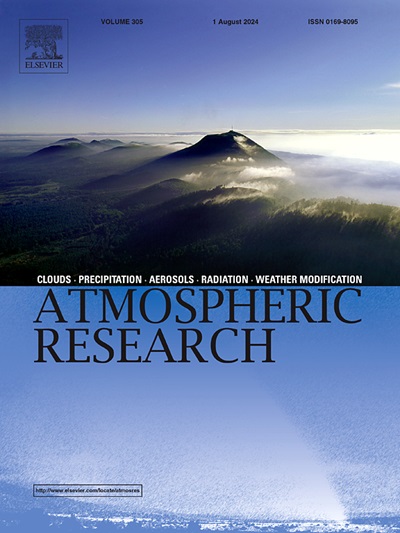Comparison of model-derived carbon dioxide datasets with the Orbiting Carbon Observatory 3 (OCO-3) observations
IF 4.5
2区 地球科学
Q1 METEOROLOGY & ATMOSPHERIC SCIENCES
引用次数: 0
Abstract
Multiple satellites are currently in orbit around the Earth, providing reliable and consistent estimates of the column-averaged dry-air mole fraction of CO2, i.e., XCO2. However, the satellite datasets suffer spatiotemporal gaps due to the narrow swath widths and the influence of clouds and aerosols. Model-derived CO2 datasets can fill these gaps; however, these model datasets lack the consistency of the satellite observations. Scientists are continually refining their methods to improve the accuracy of the model datasets. Therefore, regular evaluation of the model estimates against precise datasets is imperative to confirm their reliability. In our study, we extensively evaluated the performance of two widely used models, the National Oceanic and Atmospheric Administration (NOAA) CarbonTracker and the Copernicus Atmosphere Monitoring Service (CAMS), by comparing their CO2 datasets with the Orbiting Carbon Observatory 3 (OCO-3) XCO2 retrievals utilizing three years of data from 2020 to 2022. The results showed that overall, the CarbonTracker dataset was underestimated by -0.08 ± 0.38 ppm with an RMSE of 0.98 ppm, and the CAMS estimates were overestimated by 0.34 ± 0.43 ppm with an RMSE of 1.05 ppm. For a more detailed assessment, we compared the model and the satellite datasets separately over 10 regions of the world in terms of spatial distribution, monthly changes, seasonal variations, latitudinal distribution, and annual XCO2 growth rates. The model datasets exhibited good consistency with the satellite observations in most regions. However, significant discrepancies were observed in areas such as the Tibetan Plateau, the Himalayan Mountain ranges, equatorial Africa, and the Amazon.
目前有多颗卫星在环绕地球的轨道上运行,对柱平均干空气中的二氧化碳摩尔分数(即 XCO2)进行可靠而一致的估算。然而,由于扫描宽度较窄以及云层和气溶胶的影响,卫星数据集存在时空差距。来自模型的二氧化碳数据集可以填补这些空白;但是,这些模型数据集缺乏卫星观测数据的一致性。科学家们正在不断改进方法,以提高模式数据集的准确性。因此,必须根据精确数据集定期评估模型估计值,以确认其可靠性。在我们的研究中,我们广泛评估了两个广泛使用的模型--美国国家海洋和大气管理局(NOAA)碳追踪器和哥白尼大气监测服务(CAMS)--的性能,将它们的二氧化碳数据集与轨道碳观测站 3(OCO-3)利用 2020 年至 2022 年三年数据进行的 XCO2 检索结果进行了比较。结果显示,总体而言,CarbonTracker 数据集低估了 -0.08 ± 0.38 ppm,均方根误差为 0.98 ppm,而 CAMS 的估计值高估了 0.34 ± 0.43 ppm,均方根误差为 1.05 ppm。为了进行更详细的评估,我们从空间分布、月度变化、季节变化、纬度分布和 XCO2 年增长率等方面分别比较了全球 10 个地区的模型数据集和卫星数据集。在大多数地区,模式数据集与卫星观测数据具有良好的一致性。然而,在青藏高原、喜马拉雅山脉、赤道非洲和亚马逊河流域等地区观察到了明显的差异。
本文章由计算机程序翻译,如有差异,请以英文原文为准。
求助全文
约1分钟内获得全文
求助全文
来源期刊

Atmospheric Research
地学-气象与大气科学
CiteScore
9.40
自引率
10.90%
发文量
460
审稿时长
47 days
期刊介绍:
The journal publishes scientific papers (research papers, review articles, letters and notes) dealing with the part of the atmosphere where meteorological events occur. Attention is given to all processes extending from the earth surface to the tropopause, but special emphasis continues to be devoted to the physics of clouds, mesoscale meteorology and air pollution, i.e. atmospheric aerosols; microphysical processes; cloud dynamics and thermodynamics; numerical simulation, climatology, climate change and weather modification.
 求助内容:
求助内容: 应助结果提醒方式:
应助结果提醒方式:


